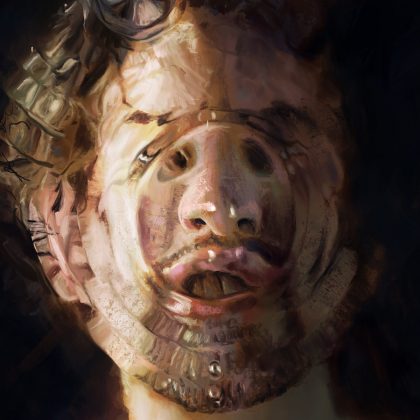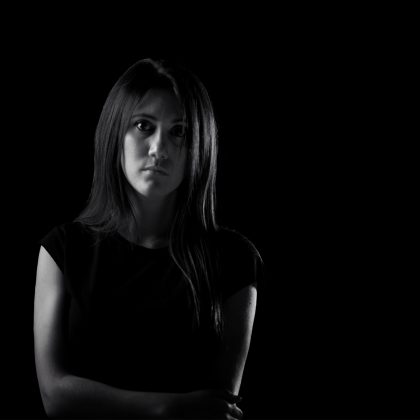Innerzone Orchestra “Bug in the Bassbin”
The birth of our underground brand Factory 93 not only brought on an adrenaline rush reminiscent of the renegade warehouse era of raving—on which Insomniac was founded—but it also had us thinking back to all the people, places and parties that made this whole operation possible. With that came a burning desire to crack open our collection and dust off the classic records we couldn’t live without. Through our From the Crates series, we’re breaking out seminal and obscure cuts alike, imparting some knowledge in the process.
In 2017, the ongoing legacy of drum & bass is readily apparent.
Just last month, a crew of junglists took over a London subway to throw a renegade rave before being shut down by police.
Drum & bass legend Goldie recently released a new single, “Castaway,” from his first full-length in nearly 20 years, The Journey Man, due this summer. It arrived the same month contemporary beat icon Burial retooled Goldie’s 1994 classic “Inner City Life” for a limited-edition Record Store Day 2017 release.
The sound still thrives in America, with storied Los Angeles drum & bass event Respect celebrating its 18th anniversary with a show headlined by Roni Size this past March.
The London-born sound has already spawned another genre, grime, which continues to grow and expand while impacting popular culture at large, thanks in part to superfan rappers like Drake and Danny Brown, who go to great lengths to continuously support the music and its artists.
As the drum & bass and jungle universe continues to thrive, it speaks to the birth of the sound itself, which came from innovative DJs pushing the boundaries of their music to the limit—often literally.
Using vinyl and turntables, early-‘90s underground British DJs would max out breakbeat and techno records to turn up the energy at all-nighters/raves. When those DJs got their hands on Innerzone Orchestra’s “Bug in the Bassbin,” some even went as far as to spin the 33-RPM 12-inch single at 45 RPM. The track’s double-timed rhythm would help create a seminal building block in the early years of the drum & bass sound.
The Innerzone Orchestra moniker—the work of pioneering Detroit techno producer Carl Craig for his Planet E label—was part of a determined effort to push his sound beyond the expected techno and house templates of the time.
“I had a clue that something was going on, because I wanted to go down that path,” he explained during a 2009 interview. “When I was making ‘Bug in the Bassbin,’ I wanted to present something that would be different, musically. I wanted to do something that came from my heart.”
Juxtaposing a big-band breakbeat and washes of analog synthesizers, the track’s hypnotic sound became a staple in DJ sets from the likes of 4hero and J Majik, which Craig would experience firsthand on performance trips overseas.
“When I first heard a DJ playing ‘Bug in the Bassbin,’ I knew they were playing it faster than normal, but I didn’t really have the concept of how it would inspire people,” Craig continued. “I knew that I wanted to inspire, but I didn’t have any idea of how it would be an integral part of inspiring guys to make breakbeat or drum & bass or whatever. I mean, breakbeat itself was something that was going on at the time when I made ‘Bug…’ with [early UK breakbeat label] Shut Up and Dance, that kind of stuff. But when people were inspired by ‘Bug…’ to make early drum & bass, I had no clue that would be the case.”
Craig acknowledges that while the track fits into the early years of jungle, it was the genre’s pioneering artists who crafted the sound.
“When I first heard Goldie’s ‘Timeless,’ it was through [journalist] Kodwo Eshun. He was doing an interview, and he said, ‘Let me play you this track here. These guys are really influenced by what you’re doing,’” Craig recalled in 2011. “And when I heard ‘Timeless,’ it was just incredible—it went far beyond what I had done with ‘Bug in the Bassbin.’ It was something that, even though he took some inspiration from us, he definitely got really deep in the arrangement of it, and the emotion of it. ‘Bug in the Bassbin’ is a kind of voodoo, tribal thing with a relentless groove that you kind of fall into, but ‘Timeless’ had this emotion and an amazing movement.”
The legacy of “Bug in the Bassbin” continued to grow throughout the ‘90s, culminating when James Lavelle licensed the track for his highly influential Mo’ Wax record label in 1996.
“My love of techno and Fat Cat records allowed me to discover and play unusual techno records, Carl Craig being one of my favorite artists from the genre,” Lavelle revealed while discussing “Bug in the Bassbin” as a defining track of famous club night That’s How It Is, which he ran with fellow DJ Gilles Peterson at London’s Bar Rumba in the early ‘90s. “His use of breakbeats fit into the music policy of the club.”
The Mo’Wax release allowed for a series of remixes of the track from a wide variety of artists, coming full circle to include drum & bass producers who had been inspired by the original version, such as 4hero and Peshay.
In 1999, Craig was motivated to bring Innerzone Orchestra to life, forming a full-band incarnation of the alias, featuring such renowned musicians as Francisco Mora Catlett and Craig Taborn. The outfit toured the world and released one full-length album, Programmed, which included a live version of “Bug in the Bassbin.”
“Innerzone, for me, was an avenue for making music that is avant-garde—a way of dealing with my inspirations from jazz,” Craig says of the live band version. “It’s an opportunity to play music that’s different to what I do as a DJ. When I’m playing on my own as a DJ, it’s focused on what I do and how I get people to respond, based on the music I play—whereas with Innerzone, it’s a collective, and people’s responses are based on the musicians and how they play.”
In an effort to go outside of the conventional norms of early-‘90s dance music, Carl Craig was able to craft a timeless and seminal track with a vast influence that still resonates today.
Talking about the burgeoning years of his independent label, Planet E, in honor of its 20th anniversary in 2010, Craig reminisced about the inspiration that spawned such impactful music. Emerging artists and producers would do well to understand the motivation.
“The vision was for it to be this futuristic music, that was kind of in line with the current trend at the time of electronic music coming out, but also a little bit in front of it. Also freeform, too, so it wouldn’t be like—since 808 State had put out Pacific State, that every record we made would sound like Pacific State, you know?” Craig summarized. “Like with [studio alias] 69, it wasn’t necessarily in line with anything directly; it was just part of the overall movement that was happening, but it went on to some other shit. It took influences from what Shut Up and Dance were doing, it took influences from what I was already doing and had been influenced by, and threw it all into a melting pot. That was how things like ‘Bug in the Bassbin’ happened and Piece’s ‘Free Your Mind’ happened—all these kinds of different music that were all pushing forward in a very futuristic direction and not being contained by any walls, or this concept of what electronic music or techno should be.”





